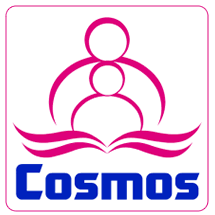EFL Undergraduate Students’ Expectations of Blended Learning in The Post-Pandemic
DOI:
https://doi.org/10.61672/eji.v8i1.2598Keywords:
Blended Learning, English, Students' ExpectationsAbstract
Education especially at the university level has experienced a shift from online learning during the COVID-19 pandemic to the post-pandemic era with blended learning. Blended learning combines learning using online learning methods combined with face-to-face learning. Students' experience of online learning during the pandemic sparked their hopes or expectations for the next learning they will do. Therefore, the role of teachers and educational institutions is important to know the needs of students to improve learning methods in the post-pandemic era by knowing students’ hopes or expectations. This study aimed to explore the students’ expectations for blended learning in the post-pandemic era. It employed a qualitative method by interviews and collected data from 10 7th-semester EFL university students in the year 2022/2023 in the public university in Bali. The interview guidelines were validated through face validity and content validity. The result revealed that the students preferred blended learning to be more interactive with lecturers and more access to resources, and technology to be used where necessary. The study provides valuable insights for the lecturers to enhance the teaching experience in future blended learning.
References
Aguilera-Hermida, A. P. (2020). College students’ use and acceptance of emergency online learning due to COVID-19. International Journal of Educational Research Open, 1(July), 100011. https://doi.org/10.1016/j.ijedro.2020.100011
Alhazbi, S., & Hasan, M. A. (2021). The role of self-regulation in remote emergency learning: Comparing synchronous and asynchronous online learning. Sustainability (Switzerland), 13(19), 1–12. https://doi.org/10.3390/su131911070
Almusharraf, N., & Khahro, S. (2020). Students satisfaction with online learning experiences during the COVID-19 pandemic. International Journal of Emerging Technologies in Learning, 15(21), 246–267. https://doi.org/https://doi.org/10.3991/ijet.v15i21.15647
Baber, H. (2020). Determinants of students’ perceived learning outcome and satisfaction in online learning during the pandemic of COVID-19. Journal of Education and E-Learning Research, 7(3), 285–292. https://doi.org/10.20448/journal.509.2020.73.285.292
Baloran, E., Hernan, J., & Taoy, J. (2021). Course satisfaction and student engagement in online learning amid COVID-19 pandemic. Turkish Online Journal of Distance Education, 22(4), 1–12. https://doi.org/https://doi.org/10.17718/tojde.1002721
Besser, A., Flett, G. L., & Zeigler-Hill, V. (2022). Adaptability to a sudden transition to online learning during the COVID-19 pandemic: Understanding the challenges for students. Scholarship of Teaching and Learning in Psychology, 8(2), 85–105. https://doi.org/10.1037/stl0000198
Bolliger, D., & Martindale, T. (2004). Key factors for determining student satisfaction in online courses. International Journal on E-Learning, 61–67. https://doi.org/10.5771/9783845279893-1090-1
Bower, B. L., & Kamata, A. (2000). Factors influencing student satisfaction with online course. Academic Exchange Quarterly, 4(3), 52–56.
DGHE. (2020). Surat edaran nomor 6 tahun 2020 Tentang penyelenggaraan pembelajaran pada semester genap tahun akademik 2020/2021. Http://Kemdikbud.Go.Id/, Mei. http://kemdikbud.go.id/main/?lang=id
Ginaya, G., Somawati, N. P., & Mataram, I. G. A. B. (2021). Implementation of E-learning for ESP in Tourism during the COVID-19 pandemic. Journal of Language Teaching and Research, 12(4), 572–578. https://doi.org/10.17507/jltr.1204.07
Graham, C. R. (2006). Blended learning systems: Definition, current trends, and future directions. Handbook of Blended Learning: Global Perspectives, Local Designs, January 2006, 3–21. www.pfeiffer.com
Gregory, R. J. (2014). Psychological testing: History, principles and applications seventh edition. In Pearson Education.
Gustriani, A., & Hamzah. (2021). English undergraduate students’ expectation of online learning for English speaking skill. Proceedings of the Eighth International Conference on English Language and Teaching (ICOELT-8 2020), 579, 29–33. https://doi.org/10.2991/assehr.k.210914.006
Hara, N., & Kling, R. (2000). Student distress in a Web-Based distance education course: An ethnographic study of participants’ experiences. Information, Communication & Society, 3(4), 557–579. http://dx.doi.org/10.1080/13691180010002297
Indrawan, I. P. ., Suwardika, G., Wijaya, I. K. W. ., Arjana, I. G., Sudirgayasa, I. G., Lawe, Y. ., & Harso, A. (2022). The difficulties of online learning in the COVID-19 pandemic reviewed from student’s perception (Bali and Flores). Exploring New Horizons and Challenges for Social Studies in a New Normal, 163–168. https://doi.org/10.1201/9781003290865-30
Kang, M., & Im, T. (2013). Factors of learner-instructor interaction which predict perceived learning outcomes in online learning environment. Journal of Computer Assisted Learning, 29(3), 292–301. https://doi.org/doi:10.1111/jcal.12005
Keshavarz, M. H. (2020). A proposed model for post-pandemic higher education. Budapest International Research and Critics in Linguistics and Education (BirLE) Journal, 3(3), 1384–1391. https://doi.org/10.33258/birle.v3i3.1193
Lewis, D. (2002). A departure from training by the book, more companies seeing benefits of E-learning. The Boston Globe.
Moore, M. G. (1989). Three types of interaction. American Journal of Distance Education, 3(2), 1–7. http://aris.teluq.uquebec.ca/portals/598/t3_moore1989.pdf
Moore, M. G., & Kearsley, G. (1996). Distance education: A system view of online learning (3rd editio). Wadsworth Cebgage Learning. https://www.worldcat.org/title/distance-education-a-systems-view-of-online-learning/oclc/816447521
Mortera-Gutierrez, D. F. (2006). Faculty best practices using blended learning in E-learning and Face-to-Face instruction. 20th Annual Conference on Distance Teaching and Learning, 1–6. https://www.learntechlib.org/primary/p/6079/
Norberg, A., Dziuban, C. D., & Moskal, P. D. (2011). A Time-Based blended learning model. On the Horizon, 19(3), 207–216. https://doi.org/10.1108/10748121111163913
Oluwatayo, J. A. (2012). Validity and reliability issues in educational research. Journal of Educational and Social Research, 2(May), 391–400. https://doi.org/10.5901/jesr.2012.v2n2.391
Pinto, M. B., & Anderson, W. (2013). A little knowledge goes a long way: Student expectation and satisfaction with Hybrid Learning. Journal of Instructional Pedagogies, 10, 1–12.
Press, I. (2006). Patient satisfaction: Understanding and managing the experience of care (2nd editio). https://www.worldcat.org/title/patient-satisfaction-understanding-and-managing-the-experience-of-care/oclc/61704001
Ratminingsih, N. M., Ana, I. K. T. A., Fatmawan, A. R., Artini, L. P., & Padmadewi, N. N. (2022). WhatsApp implementation on pedagogical content courses during COVID-19 pandemic: Students’ learning activities and perception. Kasetsart Journal of Social Sciences, 43(1), 238–244. https://doi.org/10.34044/j.kjss.2022.43.1.32
Rohana, S., & Syahputra, A. (2021). Model pembelajaran Blended Learning pasca new normal COVID-19. At-Ta’Dib: Jurnal Ilmiah Prodi Pendidikan Agama Islam, 13(1), 48. https://doi.org/10.47498/tadib.v13i01.488
Saha, M. (2019). Perceptions about learners’ roles and functions in online higher education: A qualitative research required. Journal of Teaching & Teacher Education, 7(1), 2–13. https://doi.org/10.12785/jtte/070101
Stein, J., & Graham, C. R. (2013). Essentials for blended learning: A standards-based guide. Routledge. https://doi.org/https://doi.org/10.4324/9780203075258
Suryani, N. K., & Sugianingrat, I. A. P. W. (2021). Student E-learning satisfaction during the covid-19 pandemic in Bali, Indonesia. Jurnal Economia, 17(1), 141–151. https://doi.org/10.21831/economia.v17i1.33196
Taherdoost, H. (2018). Validity and reliability of the research instrument: How to test the validation of a questionnaire/survey in a research. SSRN Electronic Journal, January 2016. https://doi.org/10.2139/ssrn.3205040
Voss, T., Kunter, M., & Baumert, J. (2011). Assessing teacher candidates’ general pedagogical/psychological knowledge: Test construction and validation. Journal of Educational Psychology, 103(4), 952–969. https://doi.org/10.1037/a0025125
Zainuddin, Z., & Keumala, C. M. (2018). Blended learning method within Indonesian higher education institutions. Jurnal Pendidikan Humaniora, 6(2), 69–77.
Downloads
Published
Issue
Section
License
Copyright (c) 2024 Ni Made Ari Dwipayanti, Made Hery Santosa, I Putu Indra Kusuma

This work is licensed under a Creative Commons Attribution 4.0 International License.




















